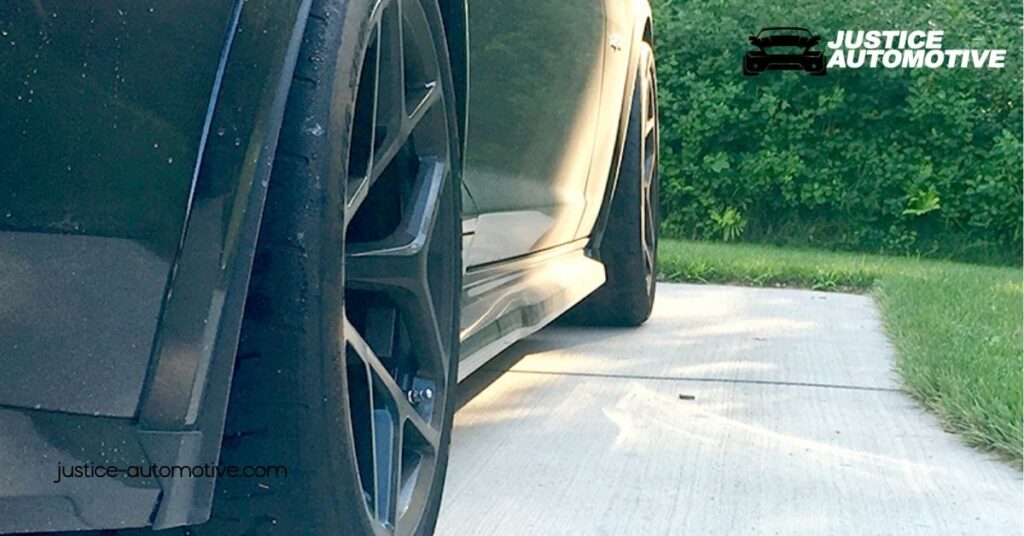When it comes to improving your front-wheel-drive car’s performance, the debate over staggered setups often sparks interest. You might be wondering if this configuration could give you that extra edge on the road. Imagine improved grip and sharper handling as you navigate tight corners or accelerate out of a turn.
Overview of Staggered Setups

Staggered setups refer to using different tire widths on the front and rear axles of a vehicle. This configuration often benefits front-wheel-drive cars by improving traction and improving cornering performance. During acceleration, wider rear tires can increase grip, allowing for better power delivery to the pavement.
In tight turns, staggered setups can enhance handling dynamics. By having a wider contact patch in the rear, you offset potential understeer tendencies common in front-wheel-drive vehicles. This adjustment can lead to more balanced cornering and increased driver confidence.
Consider the effect on tire wear. A staggered setup may result in differing wear patterns, potentially leading to the need for more frequent tire rotation. But, the performance benefits may outweigh these maintenance considerations for many drivers.
Staggered setups also impact overall vehicle aesthetics. Many enthusiasts find that wider rear tires create a more aggressive stance, improving the car’s visual appeal. Such enhancements can elevate the driving experience, making the vehicle feel more captivating on the road.
Pros of Staggered Setups for Front Wheel Drive Cars

Staggered setups for front-wheel-drive cars can offer several advantages. These benefits can enhance performance in various driving situations.
Improved Traction and Grip
Wider tires on the rear axle provide a important increase in grip during acceleration. Better power delivery occurs due to this improved traction. When you accelerate out of a turn, the rear tires’ width helps maintain stability. More grip reduces the likelihood of wheelspin, especially in wet or slippery conditions. If you encounter sharp corners, this configuration supports a more controlled exit.
Enhanced Handling Characteristics
Handling characteristics improve with staggered setups. Drivers notice reduced understeer tendencies common in front-wheel-drive vehicles. The configuration promotes a balanced feel during cornering, which instills confidence. Also, sharper steering responses enhance overall driving enjoyment. More precise control allows you to navigate tight corners with greater ease.
Cons of Staggered Setups for Front Wheel Drive Cars

Staggered setups for front-wheel-drive cars present several drawbacks that you should consider. These include uneven tire wear and potential negative effects on ride quality.
Potential for Uneven Tire Wear
Uneven tire wear becomes a important issue in staggered setups. Front wheels, which handle both steering and propulsion, experience more stress than rear wheels. Since the front tires usually wear out faster, you may find yourself replacing them more frequently. According to the National Highway Traffic Safety Administration, the size difference between front and rear tires contributes to this accelerated wear. Also, maintaining consistent tire performance can become challenging, necessitating more frequent rotations and replacements.
Impact on Ride Quality
Ride quality can deteriorate with staggered setups on front-wheel-drive vehicles. The differing size of tires impacts the vehicle’s overall balance and handling, leading to a stiffer ride. Such a setup may result in harsher impacts from road irregularities, diminishing comfort for you and your passengers. Besides, the changes in handling dynamics can create a less predictable driving experience. Reduced ride comfort and potential handling inconsistencies highlight important considerations when evaluating staggered configurations.
Expert Opinions and Case Studies

Exploring staggered setups for front-wheel-drive cars reveals a mix of expert opinions and real-industry observations. Variations in tire configurations can significantly impact vehicle performance, leading to different driving experiences.
Performance Comparisons
Staggered setups normally cater to rear-wheel-drive cars, benefiting from wider rear tires that enhance traction. For your front-wheel-drive vehicle, a reverse stagger configuration may offer similar advantages. Placing wider tires at the front increases grip where it’s most needed, especially during acceleration and turns. You might notice improved stability and handling in tight corners, which helps mitigate understeer tendencies common in front-wheel-drive cars. Identifying these benefits requires thorough analysis, as different setups produce varying results depending on driving style and road conditions.
Real-Industry Experiences
Drivers report a range of experiences when utilizing staggered setups on front-wheel-drive cars. Some appreciate the enhanced cornering ability and sharper steering response, feeling more confident during aggressive maneuvers. Others, but, encounter challenges like uneven tire wear. This issue arises because front tires handle both steering and propulsion, causing them to wear out more quickly than rear tires. Regularly replacing front tires can lead to increased maintenance costs. Riders also mention changes in ride quality, noting that differing tire sizes sometimes cause a stiffer ride and harsher impacts. Eventually, weighing these experiences can help you determine whether a staggered setup aligns with your driving preferences and needs.
Conclusion
Deciding whether to carry out a staggered setup on your front-wheel-drive car requires careful consideration of your driving style and priorities. While the potential for improved grip and handling is enticing, the trade-offs in tire wear and ride quality can’t be overlooked.
If you value performance and are willing to manage the maintenance aspects, a staggered setup might enhance your driving experience. But if comfort and consistent tire performance are more important to you, sticking with a standard setup could be the better choice. Eventually, it’s about finding the right balance that suits your needs on the road.
Frequently Asked Questions
What is a staggered setup in front-wheel-drive cars?
A staggered setup involves using different tire widths on the front and rear axles. Typically, this means wider rear tires which can enhance grip, improve cornering performance, and provide better stability during acceleration, especially in slippery conditions.
What are the benefits of staggered setups?
Staggered setups can improve performance by offering better traction and sharper handling during tight cornering. The wider rear tires enhance grip, which helps deliver power effectively and mitigates understeer, leading to increased driver confidence and enhanced overall handling.
What are the drawbacks of staggered setups?
A major drawback is uneven tire wear, as front tires wear faster due to their steering and propulsion roles. This can lead to more frequent tire replacements. Additionally, ride quality may suffer, resulting in a stiffer ride and harsher impacts on rough roads.
Can staggered setups impact ride quality?
Yes, staggered setups can negatively affect ride quality. Different tire sizes may disrupt the vehicle’s overall balance, leading to a harsher ride and making impacts from road irregularities feel more pronounced, which can reduce overall driving comfort.
Are staggered setups only beneficial for rear-wheel-drive cars?
While staggered setups typically benefit rear-wheel-drive cars, front-wheel-drive vehicles can also use a reverse stagger configuration, with wider front tires. This can enhance grip and stability during acceleration and turns, offering unique performance advantages.
How do real drivers feel about staggered setups?
Driver experiences with staggered setups vary. Many appreciate the improved cornering and sharper steering response, while others report challenges like uneven tire wear and discomfort due to altered ride quality, illustrating the importance of personal preference.

